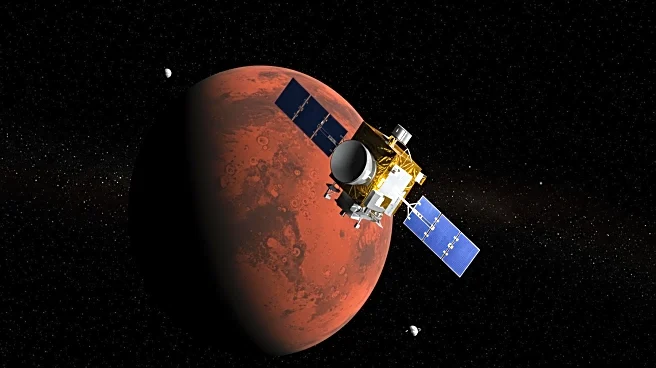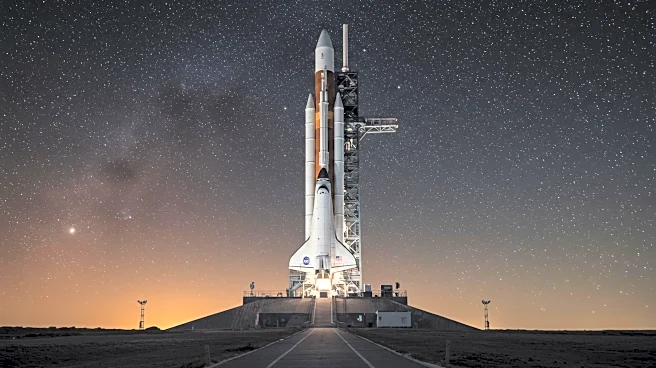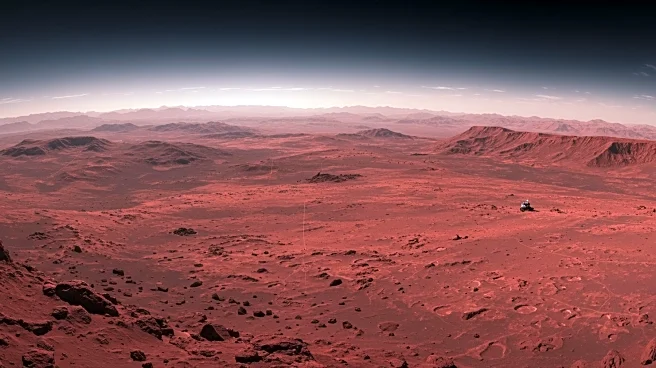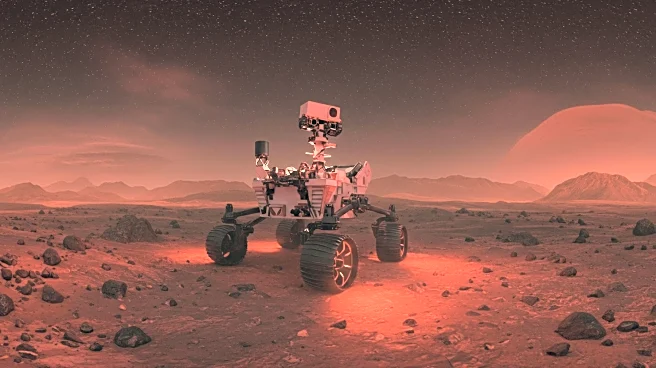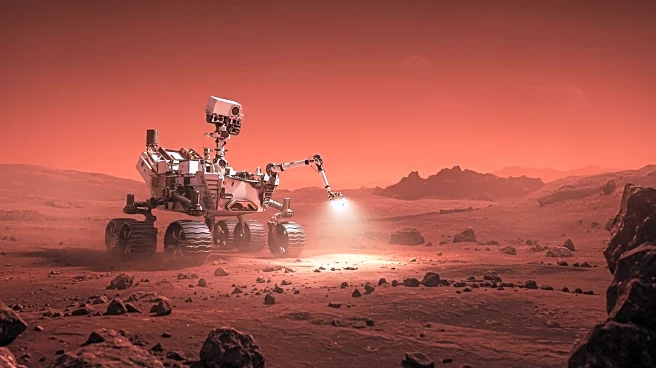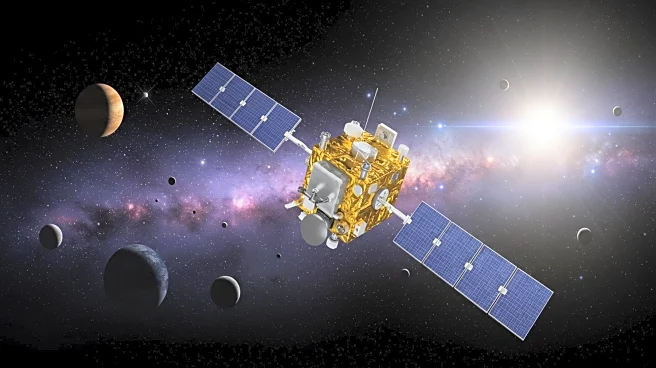What's Happening?
Blue Origin has announced plans to launch a Mars Telecommunications Orbiter by 2028, aiming to significantly improve communication between Earth and Mars. The current communication infrastructure relies on aging orbiters like the Mars Reconnaissance Orbiter and MAVEN, which were not designed as dedicated relays, leading to delays and limited data transmission capabilities. Blue Origin's proposed orbiter will utilize advanced optical communications technology, enabling transmission speeds up to 250 Mbps, which is 125 times faster than current capabilities. This development promises continuous Earth-Mars links, eliminating blackout periods that can last up to 48 hours. The orbiter will support upcoming missions such as Mars Sample Return and crewed exploration, providing real-time rover control, 4K video streams, and instant data transfer of geological samples.
Why It's Important?
The introduction of Blue Origin's Mars Telecommunications Orbiter is set to revolutionize interplanetary communication, addressing critical limitations faced by current Mars missions. Enhanced communication capabilities will allow for real-time control of rovers and uninterrupted contact with astronauts, significantly improving mission safety and efficiency. This advancement is crucial for future Mars exploration, including crewed missions, as it ensures continuous high-bandwidth connections necessary for complex operations. The orbiter's deployment will support NASA's long-term goals for Mars exploration, facilitating scientific discoveries and potentially accelerating the timeline for human presence on Mars.
What's Next?
Blue Origin is accelerating development following a contract with NASA's Space Communications and Navigation program. Key milestones include the completion of a critical design review by 2025, prototype testing in Earth orbit by 2026, and integration with the New Glenn launch vehicle by 2027. The launch window is expected to open in the third quarter of 2028. As the project progresses, stakeholders will closely monitor its impact on future Mars missions, with expectations for revolutionary discoveries once the orbiter reaches Mars orbit in 2029.
Beyond the Headlines
The deployment of Blue Origin's Mars Telecommunications Orbiter represents a significant step in building an interplanetary internet backbone, connecting Earth and Mars. This technological leap not only enhances communication but also sets the stage for new mission architectures, enabling exploration of previously inaccessible areas like lava tubes. The orbiter's continuous coverage and redundant systems will provide critical support during solar flares or dust storms, ensuring mission continuity and astronaut safety.
